Lublin 作者: 来源: 发布时间:2021-03-15
Ⅰ. Population and Area
Population (31 December 2019)
• City 339,784 Increase (9th)
Area
• City 147 km2 (57 sq mi)
Website http://www.lublin.eu
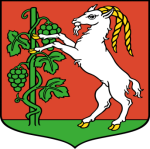
Ⅱ.Natural Geography (environment and resources)
The location of the town atop loessial rolling hills of the Lublin Upland in the valley of the Bystrzyca and its tributaries is one of its assets. During the 5th and 7th centuries the inhabitants of Lublin grew in numbers, and by 1317 Lublin was granted municipal status. In 1474 Lublin became the capital of the voivodship, a role it has continuously played to this day. During the years of the first Republic, Lublin, which was centrally located, was inhabited by different nationalities and religious denominations that constituted a rich and varied community.
Transport
- Border crossings (distances):
- to Russia: Bezledy (458 km)
- to Lithuania: Ogrodniki (395 km)
- to Belarus: Kukuryki (146 km), Terespol (148 km), Sławatycze (107 km)
- to Ukraine: Dorohusk (90 km), Hrebenne (120 km)
- to Slovakia: Barwinek (255 km), Łysa Polana (385 km)
- to the Czech Republic: Cieszyn (397 km), Kudowa-Słone (533 km)
- to Germany: Zgorzelec/Jędrzychowice (585 km), Świecko (627 km)
- International airports:
- Lublin/LUZ (10 km)
- Warszawa / Warsaw (171 km)
- Kraków / Cracow (269 km)
- Railways
- From Lublin Główny railway station, ten trains depart each day to Warsaw, and three to Kraków, as in other major cities in Poland. Lublin has also direct train connections with Rzeszów, Szczecin, Gdynia and other Polish cities and towns in the region as Nałęczów, Chełm or Zamość. The express train to Warsaw takes about two and half hours
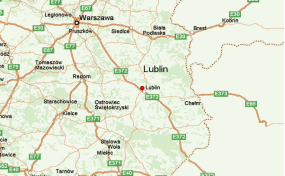
Ⅲ.Economy
LUBLIN – A CITY OF THE ECONOMIC GROWTH
- Modern business infrastructure
- First place in investment expenditure per person, thousands of new enterprises offering job opportunities, as well as successes in using available means to develop the region are just some of the city's assets. Hard economic data prove the significant economic growth of Lublin in the last decade. Cognizant city management supports this positive trend, and proof of this are the new investments made by large international companies, as well as the distinctions given by trade experts, which set the city as an example of efficient actions supporting direct foreign investment.
- Economic Lublin is built on the solid foundations of priority industry sectors chosen on the basis of expert analyses, whose development is desirable and actively supported. One of the most attractive forms of support is the Special Economic Zone. Locating investment there involves the development of well-prepared plots of land, as well as gaining significant tax relief. An additional asset is the perfect location of the plots in the vicinity of an express ring road and Lublin's airport. This incentive has already been accepted by numerous companies.
- 1 bn Euro - Investment expenses in the city's budget 2010-2018
- 21.1% - GDP growth 2010-2015
- 3800+ - New enterprises yearly
- to 70% - Tax incentives in the Economic Zone
- Investment destination / Lublin City Office https://lublin.eu/en/business/investment-destination/
- The Lublin region is a part of eastern Poland, which has benefited less from the economic transformation after 1989 than regions of Poland located closer to Western Europe. Despite the fact that Lublin is one of the closest neighbour cities for Warsaw, the investment inflow in services from the Polish capital has secured a steady growth due to relatively fast connection, while external investments are progressing, enabling nearby satellite municipality Świdnik for large-scale industrial investments, seamlessly testing the capacity of the agglomeration. The close cooperation with Warsaw is significant to the regional economy, bringing quality cultural events inshore, yet the proximity of Warsaw is an underestimated asset.
- Polish MPs in the PZL Świdnik helicopter factory
- Perła – Browary Lubelskie
- Lublin is a regional centre of IT companies. Asseco Business Solutions S.A., eLeader Sp z o.o., CompuGroup Medical Polska Sp. z o.o., Abak-Soft Sp. z o.o. and others have their headquarters here. Other companies (for example Comarch S.A., Britenet Sp. z o.o., Simple S.A., Asseco Poland S.A.) outsourced to Lublin, to take advantage of the educated specialists. There is a visible growth in professionals eager to work in Lublin, due to reasons, like quality of life, culture management, the environment, improving connection to Warsaw, levels of education, or financial, because of usually higher operating margins of global organisations present in the area.
- The large car factory Fabryka Samochodów Ciężarowych (FSC) seemed to have a brighter future when it was acquired by the South Korean Daewoo conglomerate in the early 1990s. With Daewoo's financial troubles in 1998 related to the Asian financial crisis, the production at FSC practically collapsed and the factory entered bankruptcy.[citation needed] Efforts to restart its van production succeeded when the engine supplier bought the company to keep its prime market.[citation needed] With the decline of Lublin as a regional industrial centre, the city's economy has been reoriented toward service industries. Currently, the largest employer is the Maria Curie-Sklodowska University.
- The price of land and investment costs are lower than in western Poland. However, the Lublin area has to be one of the main beneficiaries of the EU development funds.[16] Jerzy Kwiecinski, the deputy secretary of state in the Ministry for Regional Development at the Conference of the Ministry for Regional Development (Poland in the European Union — new possibilities for foreign investors) said:
- In the immediate financial outlook, between 2007 and 2013, we will be the largest beneficiaries of the EU — every fifth Euro will be spent in Poland. In total, we will have at our disposal 120 billion EUR, assigned exclusively for post-development activities. This sum will be an enormous boost for our country.
- In September 2007, the prime minister signed a bill creating a special economic investment zone in Lublin that offers tax incentives. It is part of “Park Mielec” — the European Economic Development area. At least 13 large companies had declared their wish to invest here, e.g., Carrefour, Comarch, Safo, Asseco, Aliplast, Herbapol, Modern-Expo and Perła Browary Lubelskie. At the same time, the energy giant Polska Grupa Energetyczna, which will build Poland's first nuclear power station, is to have its main offices in Lublin.
- Modern shopping centers built in Lublin like Tarasy Zamkowe (Castle Terraces), Lublin Plaza, Galeria Olimp, Galeria Gala, the largest shopping mall in the city, covering 33,500 square meters of area. Similar investments are planned for the near future such as Park Felin (Felicity) and a new underground gallery ("Alchemy") between and beneath Świętoduska and Lubartowska Streets.
Ⅳ.Industrial Characteristics
KEY SECTORS
1. INDUSTRIAL & LOGISTICS
Lublin's assets, such as its location and infrastructure, will allow it to become the primary logistics centre for the eastern border of the EU. It owes this to its favourable location at the junction of transport routes heading from the Baltic states to the Balkans, and from Western Europe to Ukraine and Russia. An additional advantage is the transport network being constantly developed as well as excellent access to investment resources. High-flow-rate expressways surround Lublin. The railway infrastructure allows for transporting goods to Eastern Europe as well as to Baltic seaports, and Lublin airport offers freight transhipment.
Moreover, the city is abundant with investment areas perfect for logistics, as well as industrial developers, and local government institutions provide full support to entrepreneurs during the entire investment process. Lublin is proud of its vast pool of highly qualified employees, graduates of such universities as the Lublin University of Technology and the Technical School of Transport and Communication. What proves that the city offers great opportunities for industrial developers operating in the logistics sector is the fact that key players in the sector located their businesses here.
2. EXPERIENCE INDUSTRIES
The 21st-century city is not just an area reserved for office buildings and factories, but primarily a meeting place for the exchange of ideas and experiences, as well as an incubator of creativity and modern culture. Lublin, due to its favourable geographic location on routes connecting Western with Eastern Europe, as well as Scandinavia with the Balkans, has always been a convenient meeting place for trade, and intermingling cultures have stimulated the high creativity level of its residents. Modern Lublin offers cutting-edge infrastructure tailored to business meetings: exhibition halls, conference centres and the best hotels with a unique standard of service.
Industries connected with culture and creativity thrive in the city. The newly opened Centre for the Meeting of Cultures hosts world-class artists and unique events. It fosters the development of high and alternative culture by organising famous festivals such as the Magician's Carnival and Different Sounds. The city's creative industry is visible both in artists' work, as well as the rapidly developing companies recognised in Poland and abroad, supported by a growing start-up ecosystem and the creativity of academic circles.
3. FOOD PROCESSING
Due to the long tradition and its location in the heart of a large agricultural region, Lublin is an important food processing centre.
Lublin Region is the Polish centre for agricultural production which provides 1/3 of the raw material for the entire domestic market. Its natural topography, climate and fertile soils are invaluable assets. Growing various types of cereal, industrial plants, vegetables and fruit, along with animal husbandry, allow Lublin to be a source of raw material supply. Moreover, the ecological food sector is also growing rapidly, with 2000 farms being run in the region.The best-developed sectors in Lublin include grain-milling, fruit and vegetables, dairy, meat, brewing, herbs, bee-keeping, tobacco and spirits. Businesses benefit from cooperation with higher education institutions, which allows them to develop their products and implement innovative solutions. Farmers are keen on being supported in introducing new crops for industrial needs. Additional advantages are Lublin's strategic location, good transport infrastructure as well as perfect conditions for running logistics business allowing companies to distribute their products successfully.
4. BIOTECHNOLOGY & HEALTHCARE
The highly rated Lublin's healthcare sector is based on the highest quality medical services and developing biotechnology sectors, and its driving force is its strong academic background.
There are 13 well-equipped hospitals in the city, including four teaching hospitals of the Medical University, which educate future medical personnel and provide a place to implement unique treatment and diagnostic procedures. The high quality of services and competitive prices in the private sector encourage patients from abroad to visit healthcare centres in Lublin. The sector's potential is strengthened by a successful cluster of healthcare and health-promotion services which offer a cooperative platform for the university, R&D units and healthcare centres, as well as business entrepreneurs and institutions. The cluster supports R&D activity, cooperation between units, and fosters the high quality of medical services.The driving force behind the sector is the academic background - future employees of biotechnology and pharmaceutical companies are educated at four universities. What is more, The Medical University of Lublin is the most popular medical school in Poland among international students from several dozen countries. The implementation of projects with extensive commercial potential is a trademark of Lublin’s universities and research laboratories. The effects of Lublin scientists' efforts are the invention of artificial bone, a malaria vaccine, the creation of mutanases and ectoine, alongside a number of studies connected with the invention of new drugs, polymers and solutions in energy technology.
5. AUTOMOTIVE & MACHINERY
Lublin is a city which boasts a long tradition of automotive and machinery sectors going back to the interwar period. It is an important place on the map of production centres for passenger cars parts, lorries, tractors, coaches and aviation equipment.
The tradition of the Lorry Production Plant, and later Daewoo Motor Poland Factory is now continued by several numerous small and medium companies using the resources and long-term experience of Lublin industry. A significant group are the sub-suppliers creating components for vehicles produced on the assembly lines of large automotive concerns. Another group are the companies designing innovative technological solutions – part of a wider production process aimed directly at the end customer. Of importance to Lublin's advanced engineering technologies sector are the R&D centres specialising in the design of innovative technological solutions for the needs of particular clients. The scope of their activities includes construction design, process modelling and safeguarding technical documentation pertaining to production. These companies represent the following industries: aviation, automotive, and the machine sector, as well providing elements for the space sector. Moreover, the automotive and machinery sector is supported by 'Lublin Automotive and Machinery Upland Foundation', which aims at establishing ecosystem, that will increase the competitiveness of Lublin industry in trilateral cooperation between entrepreneurs, universities and local government.
6. MANUFACTURING INDUSTRY
Lublin - the largest industrial centre in eastern Poland - has a very rich industrial tradition, is the location of many companies with a significant position on the European market, and offers attractive development prospects providing the necessary infrastructure.
Lublin is a place of development for many branches of industry. Apart from the automotive and machinery industry and food processing, these include printing, metalworking, building materials manufacturing and leather industry. What all these branches have in common are very good conditions for the development of industry in Lublin. It is possible thanks to areas adapted for the development of industry and equipped with necessary infrastructure, as exemplified by the Special Economic Zone Lublin Subzone in the Felin district, greater opportunities to find employees than in the western part of Poland, as well as Lublin's transport accessibility ensured by the airport and now modernised transit routes for car transport and railways, which allows access to the DCT terminal and seaports in the Baltic. The development of industry in Lublin is supported by high quality technical secondary schools and universities, including the Lublin University of Technology, which establish cooperation with enterprises in the field of research and development as well as preparation of study programmes tailored to market needs.
Investment destination / Lublin City Office https://lublin.eu/en/business/investment-destination/
Key Project
- 1. 7R announces new project in Lublin
- 7R, a Polish developer of modern warehouse space, will make its debut on the Lublin market. The planned investment – 7R Park Lublin – will be a complex of modern warehouse facilities located in the industrial part of the city. The 7R Park Lublin logistics complex will consist of five buildings with a total area of around 110,000 sqm. The project is currently in the planning and design phase.
- 7R announces new project in Lublin - EuropaProperty https://europaproperty.com/news/2020/04/7r-announces-new-project-in-lublin/
- 2. Agreement signed for Lublin rail agglomeration project
- Polish railway infrastructure manager, PKP PLK, and the government of Lublin Province signed an agreement for Lublin rail agglomeration development to provide passenger better access to railway services.
- Lublin rail agglomeration to be developed under a signed agreement https://www.railwaypro.com/wp/agreement-signed-for-lublin-rail-agglomeration-project/
Ⅴ.Attrations and Cityscape
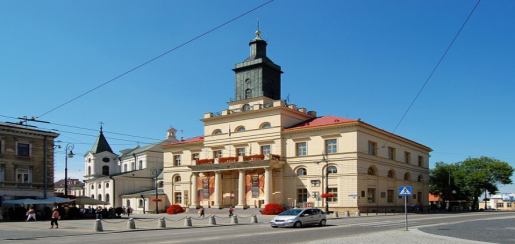
Lublin Town Hall
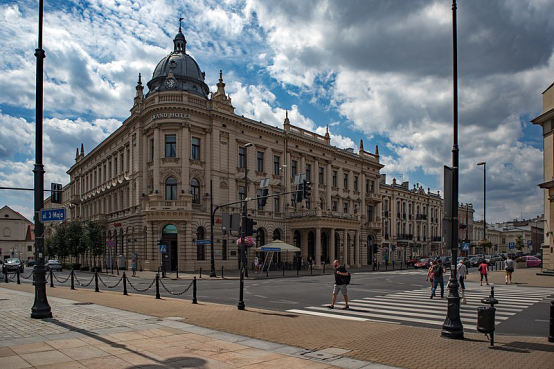
Grand Hotel Lublinianka
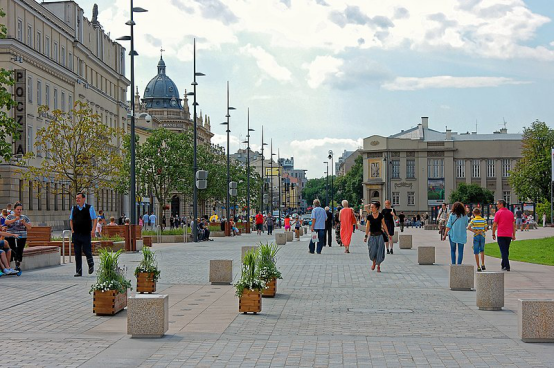
Litewski Square
- Lublin is the largest city in eastern Poland and serves as an important regional cultural capital. Since then, many important international events have taken place here, involving international artists, researchers and politicians. The frescos at the Holy Trinity Chapel in Lublin Castle are a mixture of Roman Catholic motifs with eastern Byzantine styles, reinforcing how the city connects the west with the east.
- Old Town
- Crown Tribunal in the Old Town
- Lublin's Old Town shares a number of Lesser Poland traditions, historic architecture and a unique ambience with Kraków. It is, however, a distinct experience in itself, benefitting from artistic renovation and less commercialization. Historic buildings, including ruined townhouses, create a unique atmosphere of the renaissance city. Lublin's Old Town has cobbled, narrow streets and traditional, unspoilt design. Many venues around Old Town enjoy an architecture applicable for restaurants, art galleries, and clubs. Apart from entertainment, the area houses small businesses and prestigious offices. Old Town's Church of St. Josaphat was built in 1786.
- Catering to students, who account for 35% of the population, the city offers a vibrant music and nightclub scene[27] Lublin has many theatres and museums and a professional orchestra, the Lublin Philharmonic.
- Pubs and restaurants
- Lublin boasts a rich culinary scene. Just in the Old Town and the immediate environs, over 100 restaurants, cafes, pubs, clubs and other catering outlets are located. In the latter half of the 2010s, the international community surrounding Lublin's medical university impacted the growth of restaurants offering various cuisines.
Ⅵ.History and Culture
Situated on Europe’s major routes that connected the West with the countries of the North and South-East, in the mid-14th century Lublin became a hub of brisk international trade. At the same time, during the reign of King Sigismund II Augustus, Lublin was an ideological capital of the Polish Republic - it was here that a real union between the Kingdom of Poland and Lithuania was formed. At the turn of the 14th century, after the establishment of the Polish-Lithuanian state, Lublin’s location changed. Once a frontier town, Lublin lay now in the centre of the state, halfway between Kraków, the capital of the Kingdom of Poland, and Vilnius, the capital of the Grand Duchy of Lithuania. Later, in the 19th and 20th centuries, the city on the Bystrzyca river was also halfway from one capital to another, but this time between Warsaw (first the capital of the Duchy of Warsaw, then of the Kingdom of Poland and, finally, of the whole country when Poland had regained her sovereignty), and Lviv (first the capital of Galicia, and then of western Ukraine). This geographical and political location of Lublin had a substantial influence on the city’s role and significance in Poland’s history. This influence is visible also today.
Lublin is the largest city in eastern Poland and serves as an important regional cultural capital. Since then, many important international events have taken place here, involving international artists, researchers and politicians. The frescos at the Holy Trinity Chapel in Lublin Castle are a mixture of Roman Catholic motifs with eastern Byzantine styles, reinforcing how the city connects the west with the east.
Ⅶ.Other Information
In 2007, Lublin joined the group of Polish cities as candidates for the title of European Capital of Culture. Lublin was shortlisted, but ultimately Wrocław was chosen.
Lublin is the city that symbolises European idea of integration, universal heritage of democracy and tolerance and the idea of dialogue between the cultures of the West and East. Lublin is a unique place where cultures and religions meet. Here the East meets West, and the European Union meets Belarus and Ukraine. It is the perfect place of cooperation for European artists living within and outside the European Union. Lublin is a city open to artists, a place where unique initiatives and activities take place. Lublin means the experience of hundreds of years of rich history and cultural heritage which constitutes an endless source of inspiration for new generations.
Ⅷ.Contact Information
- Mayor Krzysztof Żuk
- ul. Wieniawska 14 (1st floor)20-071 Lublin
- tel.: +48 81 466 1009
- fax +48 81 466 1003
- e-mail: foreigners@lublin.eu
-
